GMS Field Trip January 2023
If you have any questions about field trips send email toGMS Field Trip
Various Rocks and Plant Tour in Georgia
Friday, January 6, 2023
With great pride, Elberton, Georgia carries the nickname “Granite Capital of the World”. It is a fitting name because Elberton sits atop a granite deposit that is approximately 35 miles long, 6 miles wide, and 2 to 3 miles deep! In addition to numerous granite quarries, Elberton is also home to numerous processing plants. The plants process more than Elberton granite. They process material from all over the world.
Our trip started at one of those plants. We saw water jet cutting processes that are computer controlled and use lasers for alignment and garnet sand for cutting. Workers showed us what they do and how the equipment works, then they answered all of our questions. There were several slabs set out for us so we could see the difference between the surfaces before and after polishing. Since the material comes from all over the world, we saw a variety of slabs and enjoyed seeing them up close where we could discern some of the mineralogy.
We transitioned from inside the plant to outside the plant where we were given permission to take as many scrap pieces as we wanted. Some of the material is natural and some is manufactured. We learned quickly how to distinguish which was which as we perused the scraps. Members collected oval and round pieces cut from slabs to make holes for sinks. Smaller round pieces that were cut out for faucets and sink handles will be great for grab bags. Members collected many other pieces for use in grab bags too.
Notable amongst the scraps we collected were two similar things – larvikite and labradorite. Although they both display beautiful blue iridescent flashes, their compositions are very different. Larvikite is an igneous rock named for Larvik, Norway where it was first found. The mineral website mindat.org describes it as a “variety of augite syenite or monzonite consisting of rhomb-shaped ternary feldspars (with a distinctive schiller), barkevikite, titanian augite and lepidomelane.” Labradorite is a calcium enriched feldspar mineral and is named for Labrador, Canada where it was first identified. Named for labradorite, the term “labradorescence” is a particular optical effect where one can see iridescent flashes of color from different angles. Both exhibit labradorescence. Larvikite is often used for countertops, so it isn’t unusual to find scraps of it. I didn’t expect to find any labradorite because I never saw any on prior trips and I thought it would be too exotic for use as countertops. Of course, as soon as I said that to everyone else, I found a piece! It was fun comparing it to the larvikite. Side by side it is obvious that they are very different, but both are exquisite.
Members also found pieces with garnets of varying sizes and colors, tourmaline, different colors of granite, as well as denim sodalite, a marketing term for a rock that contains the mineral sodalite plus other minerals. Some of the manufactured stone is so well made it is hard to tell that it is not natural. It is interesting for its variety of colors and composition, including recycled glass, so we collected samples of it too. One piece in particular caught Charles’ eye and he insisted Cameron Clines had to take it home. The back is stamped with a dragon logo and the brand name “Cambria”, but the last three letters of the name were broken off leaving only “Cam”. As Charles explained, how often do you find a rock with your name on it?
After we collected as much as our vehicle axles could bear, we regrouped at the Elberton Granite Museum. Museum volunteers played a wonderful video for us that explained the history of granite mining in Elberton as well as how mining techniques and equipment have changed over time. We also learned a lot just by strolling around the museum examining the excellent displays.
It was a great trip and would not have been possible without the warm and gracious welcome we received from the processing plant personnel. They are working on many improvements to the plant and invited us back next year to see the exciting changes. Museum volunteers were also very nice and answered all of our questions. A heartfelt thank you to all of them, the members who came and made us laugh, and to Charles for arranging this trip!
Lori Carter
On behalf of Charles Carter, Field Trip Chair
e-mail:
Plant Tour
Photo by Diana Poppelreuter

Learning about the plant
Photos by Lori Carter
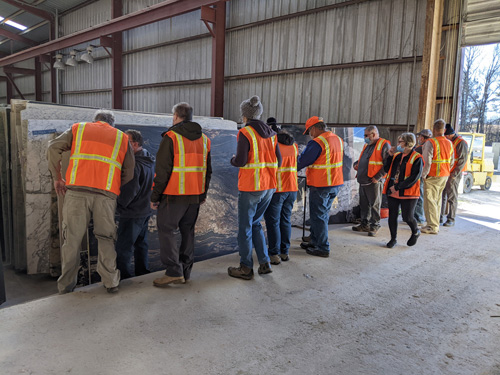
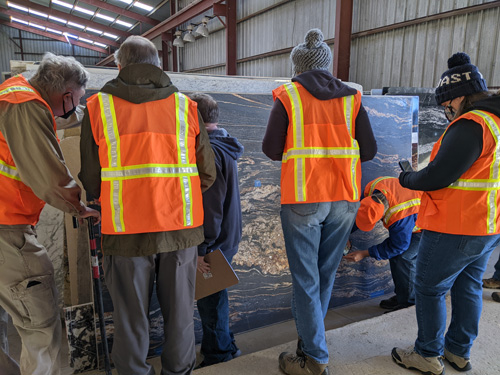

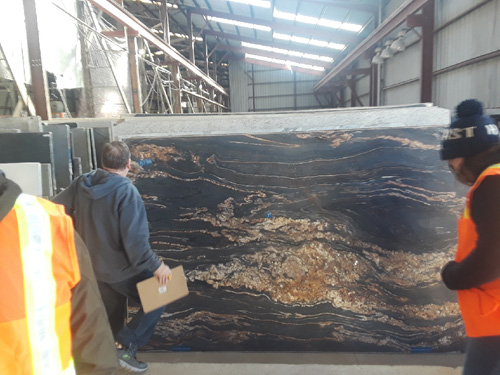
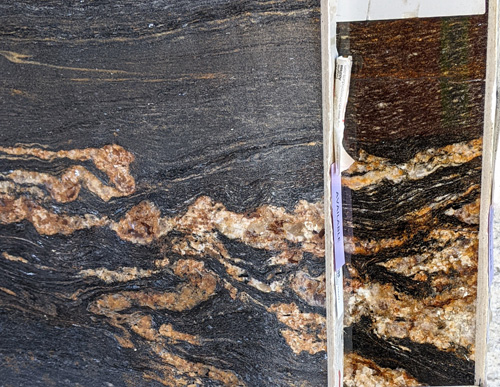
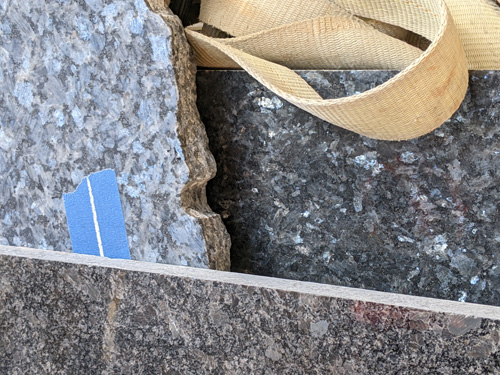
Slabs for us to see before and after polishing
Photos by Lori Carter

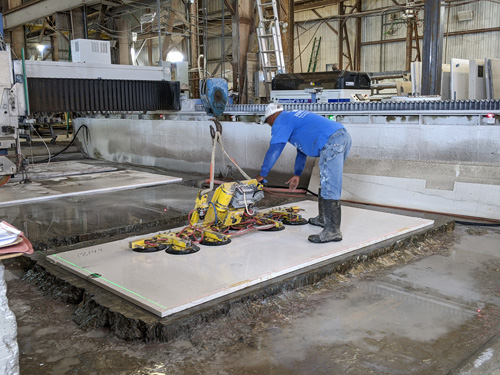
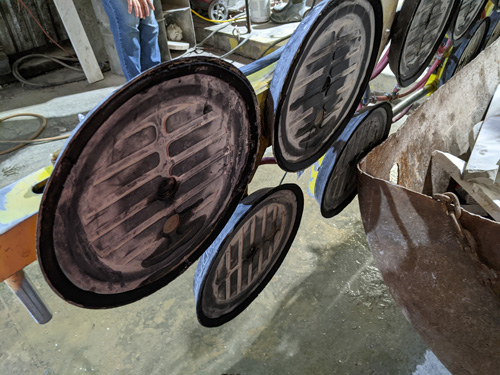

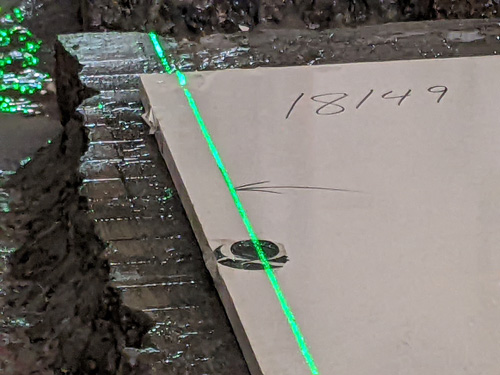
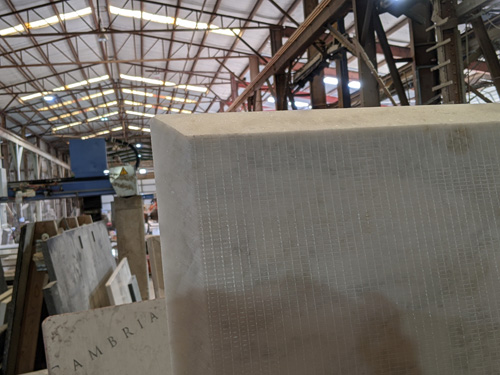
Laser aligning and water jet cutting slabs
Photos by Diana Poppelreuter
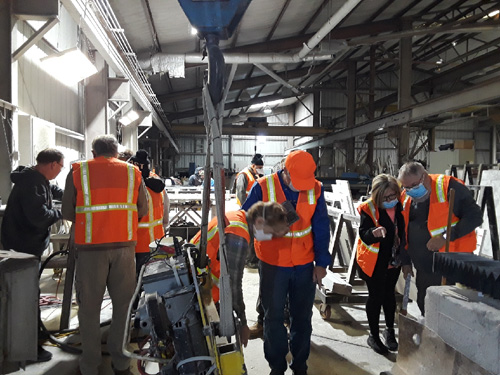
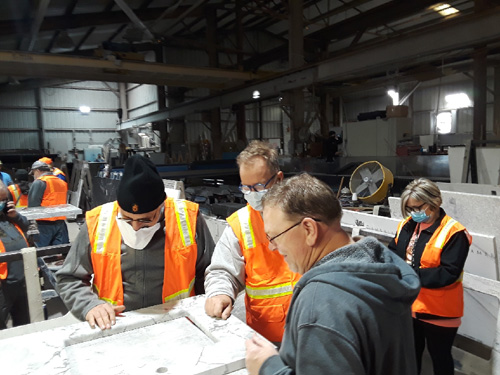
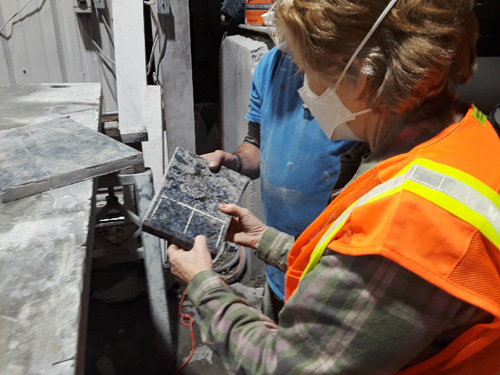

Getting to look close-up at finishing processes
Photos by Lori Carter
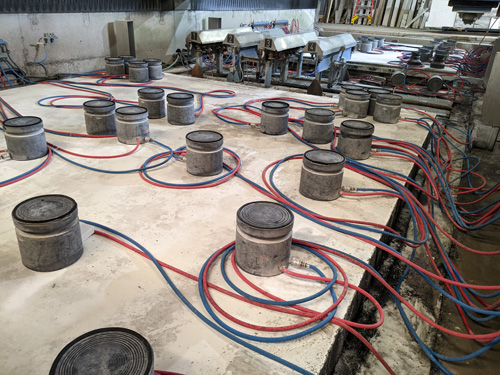
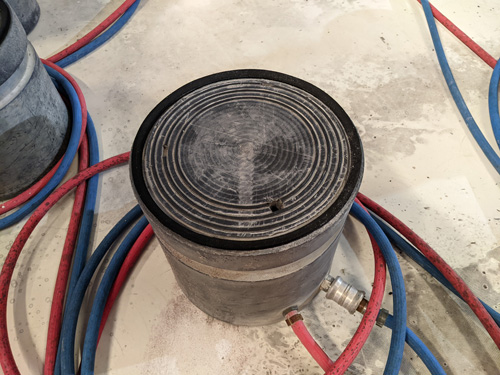

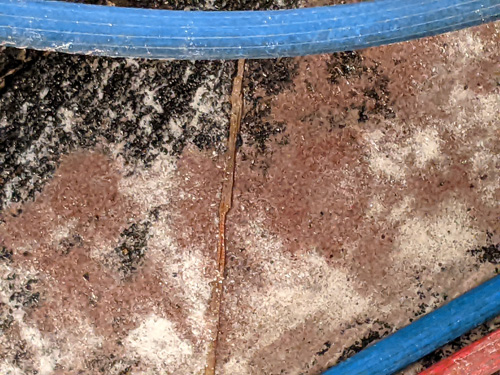
Giant suction cups can be configured to hold slabs for water jet cutting
with garnet sand, but avoid being cut by the water jets
Photos by Lori Carter
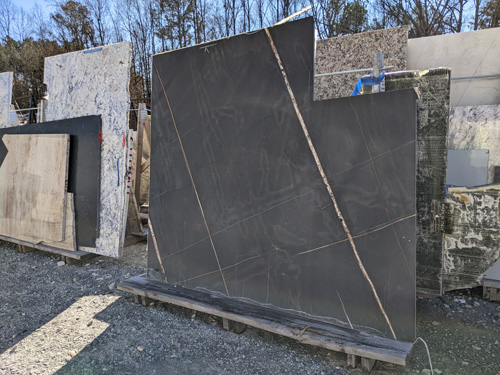
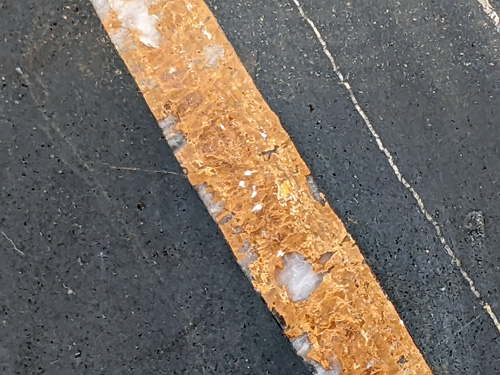
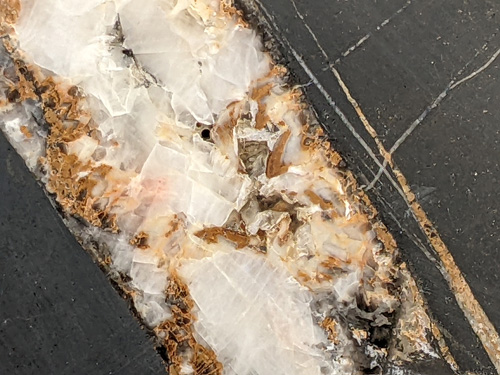
A slab outside with some interesting mineralogy in the veins
On the piles
Photos by Lori Carter
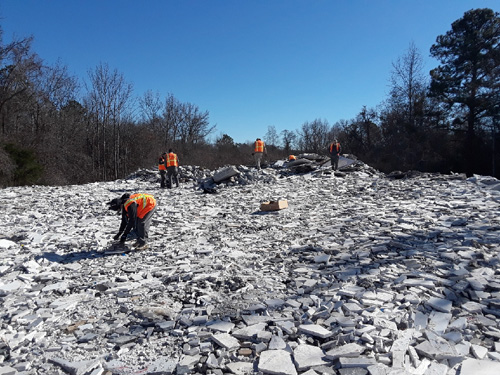
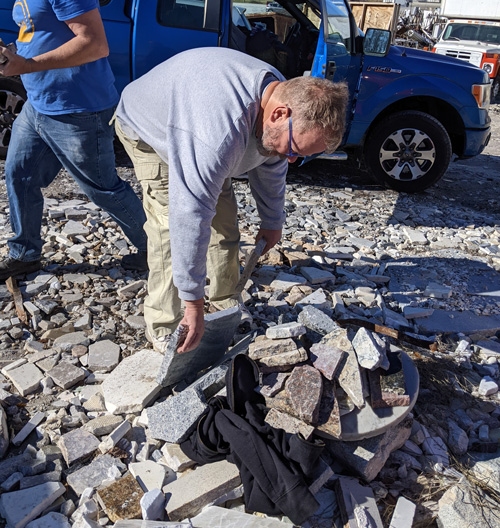
Permission to take as much as we wanted!
Photos by Lori Carter
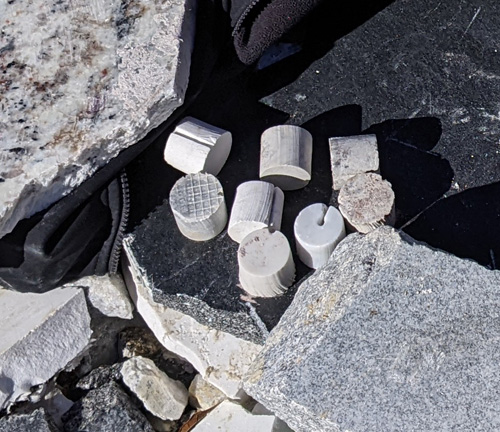
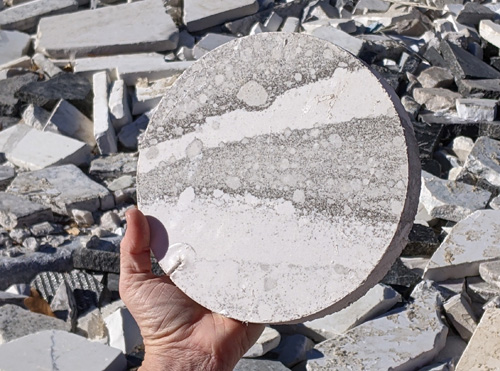
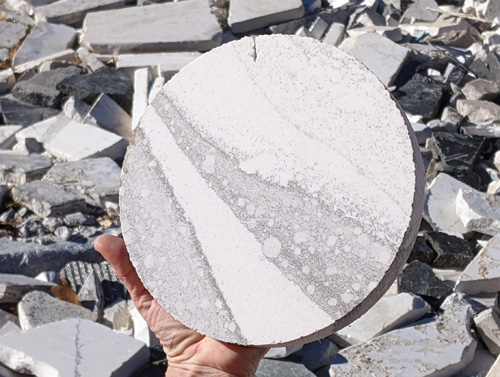
Faucet cut-outs for grab bags and a round piece that looks like a planet!
Photo by Lori Carter
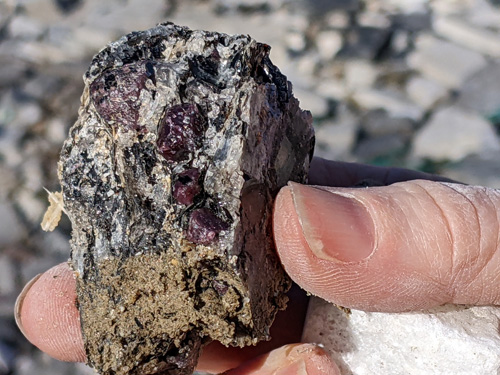
A piece with fairly large garnets
Photo by Ken Scher
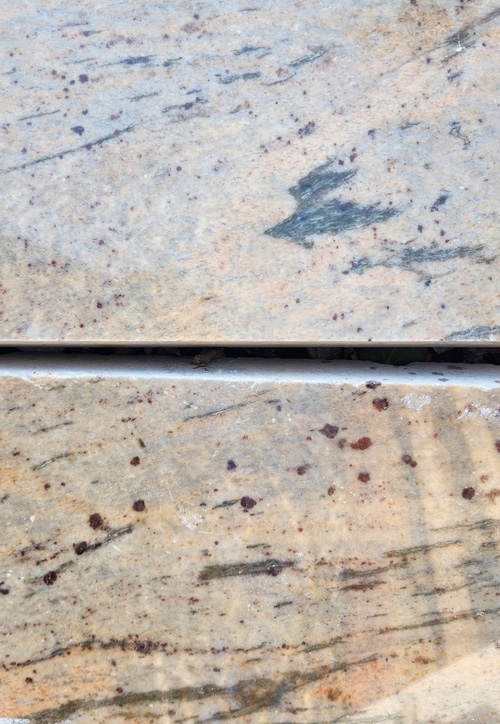
These 2 pieces have varying sizes of garnets
Photo by Ken Scher

Once you get your pieces home, you can build little cities
Photos by Lori Carter
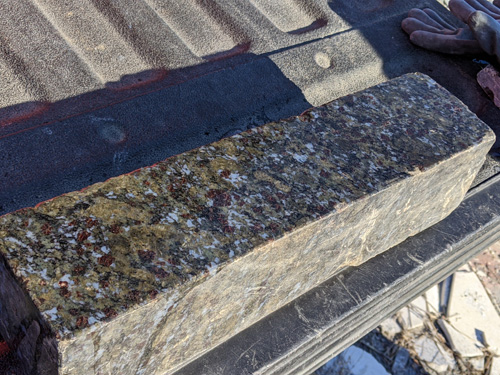
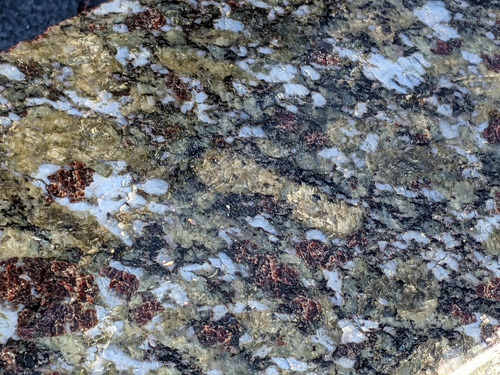
This large block has gorgeous color and pattern
Photos by Lori Carter
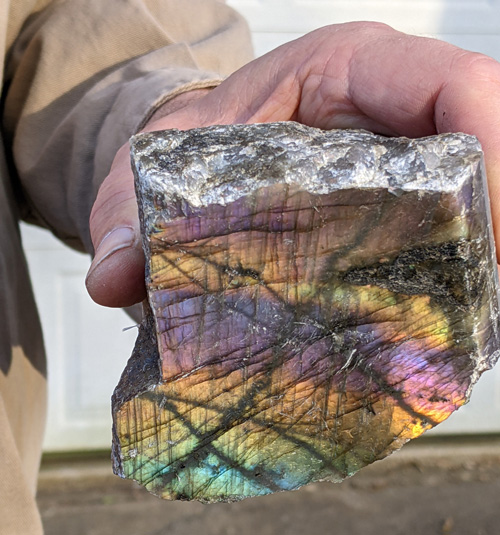
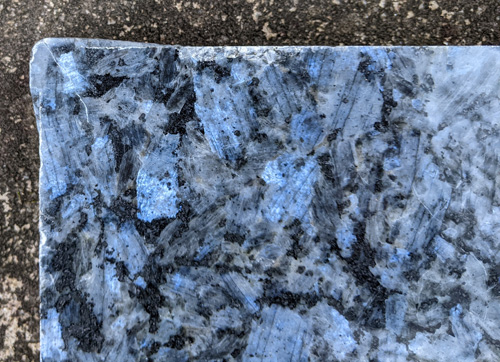
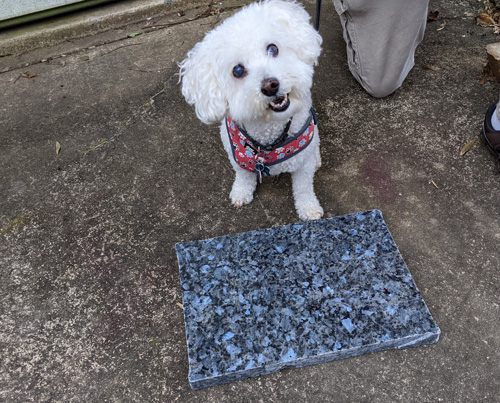
Labradorite (top) compared to larvikite with Gilligan for scale (middle and bottom)
Photo by Lori Carter
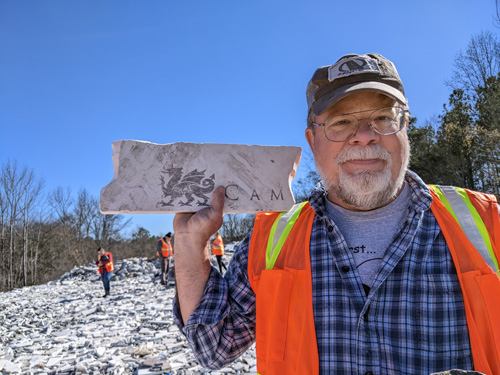
Cam can confirm that eventually you will find a rock with your name on it
(and maybe a cool dragon too...)
At the museum
Photo by Diana Poppelreuter
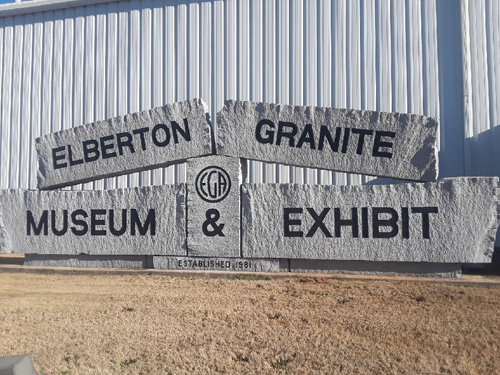
A great museum for learning about granite quarrying, processing, and its history in Elberton
Photo by Lori Carter
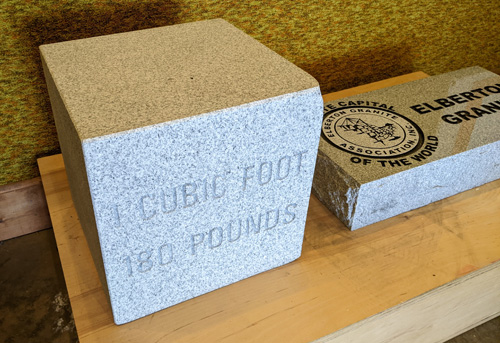
This could explain why the car seemed so heavy on the way home...
Photo by Lori Carter
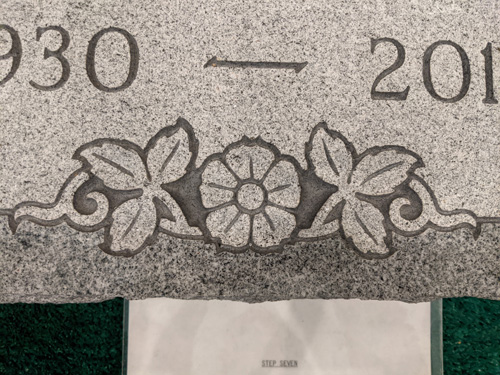
The difference in colors on this piece are simply depth and polished versus not polished
Photos by Lori Carter

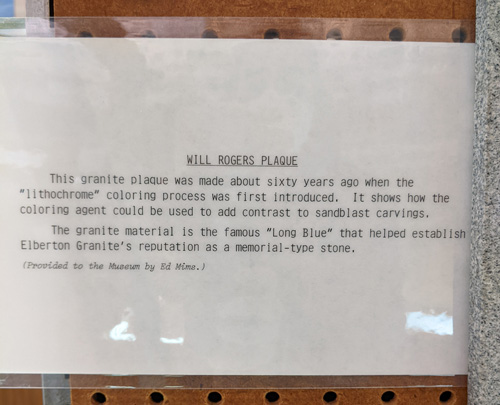
The colors in this piece were accomplied with via special process
Photo by Ken Scher
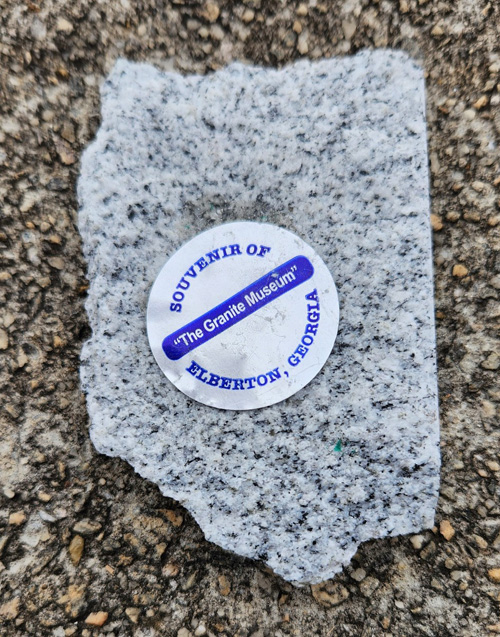
We even got some granite sovenirs from the museum!
Click below for field trip policies

Copyright © Georgia Mineral Society, Inc.
